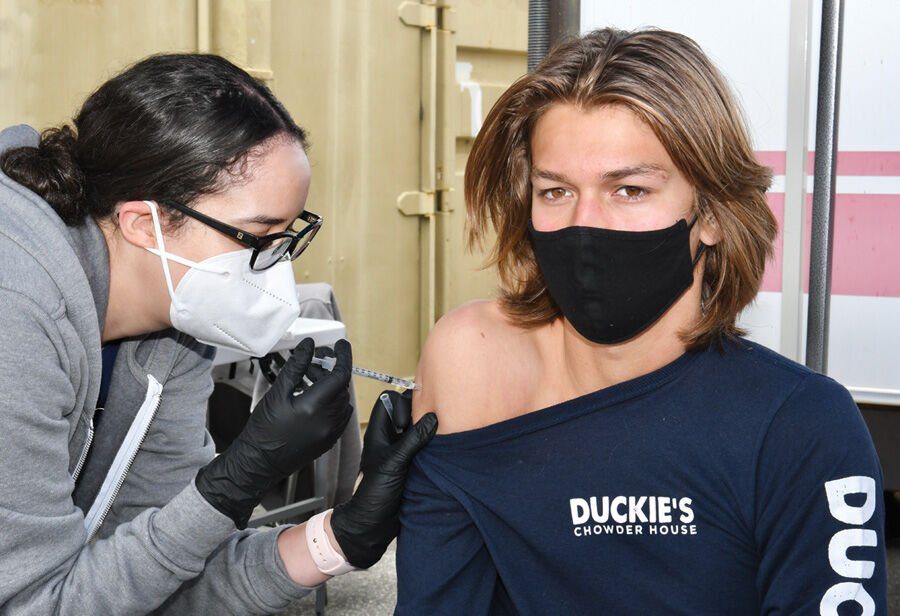By now, many of you reading this will have been vaccinated against COVID-19. According to the latest tracking statistics, a little over half of eligible Malibuites have received at least one dose of Pfizer, Moderna or Johnson & Johnson.
Los Angeles County has issued a little more than 8 million doses, partially vaccinating about 5 million residents and fully vaccinating another 3 million. This, of course, is a big milestone for the state’s most populous county, once the nation’s epicenter of the coronavirus pandemic. It is also the main factor in why the county is considered on track to reach herd immunity by late summer.
With Los Angeles County now in what’s called the yellow tier, with the adjusted rate of daily new COVID-19 infections at 1.6 per 100,000 residents, looser health restrictions are now in place and businesses can open to a wider number of people.
So, what can a fully vaccinated person do with his or her newfound freedom?
According to the U.S. Centers for Disease Control and Prevention (CDC), which gives national advisory guidance only, a fully vaccinated person can:
•Spend time indoors with other fully vaccinated people without wearing masks or physically distancing, except in a workplace setting.
•Spend time with unvaccinated people from a single household who are at low risk for severe COVID-19 disease indoors without wearing masks or physically distancing.
•Eschew face coverings outdoors except when attending crowded outdoor events or inside stadiums.
•Refrain from quarantine and testing following a known exposure, so long as the vaccinated person remains asymptomatic.
The CDC still advises the fully vaccinated to continue to take certain precautions, such as wearing a well-fitted mask indoors with large or at-risk groups and when attending crowded events.
So how about eating out at an indoor restaurant? According to CDC guidelines, it’s safe for the fully vaccinated—much less safe for those uninoculated (although the CDC recommends even the vaccinated wear a mask when not eating or drinking, presumably to reduce any risk of transmission).
Need a haircut after 14 months? The CDC advises, whether you are vaccinated or not, to wear a mask indoors, although it identifies the activity as less safe for the unvaccinated. The same advice is given to anyone who wants to go shopping, ride public transportation, visit a museum or go to a movie theater. In fact, mask requirements have not been lifted yet in Los Angeles County for indoor public spaces.
National mask recommendations are still advised for indoor worship services, singing in an indoor chorus and participating in an indoor, high-intensity exercise class.
One important change for the CDC this past week was—at long last—the recognition of aerosol transmission as the primary basis for the virus’ spread, underscoring the importance of good ventilation and indoor mask wearing and the inadequacy of six-foot distancing among the unvaccinated in poorly ventilated or crowded indoor spaces.
The nation’s leading expert on infectious disease, Dr. Anthony Fauci, said Sunday he is open to relaxing indoor masking rules as more Americans get vaccinated against the virus. Fauci, President Biden’s chief medical adviser for the pandemic, said that as vaccinations climb “we do need to start being more liberal” in terms of rules for the vaccinated wearing masks indoors. Still, Fauci noted that COVID-19 is a continuing threat with the nation averaging roughly 43,000 new cases of the virus daily. While new cases in the U.S. have dropped to their lowest levels since September 2020, 582,000 Americans have died from the virus. Some medical experts are questioning that number, saying the total could actually be much higher.
One continuing question is whether vaccination prevents not only symptomatic infection but asymptomatic infection and/or transmission of the virus to others. (The original Salk polio vaccine, for example, prevented disease in the vaccinated individual but not transmission to others.) While the data on this is not yet conclusive, preliminary indications are that the COVID-19 vaccines should provide substantial protection against asymptomatic transmission. Interactions among unvaccinated people, however, carry the same risks as at the start of the pandemic, if not more, in light of the more infectious or virulent variants currently circulating.



